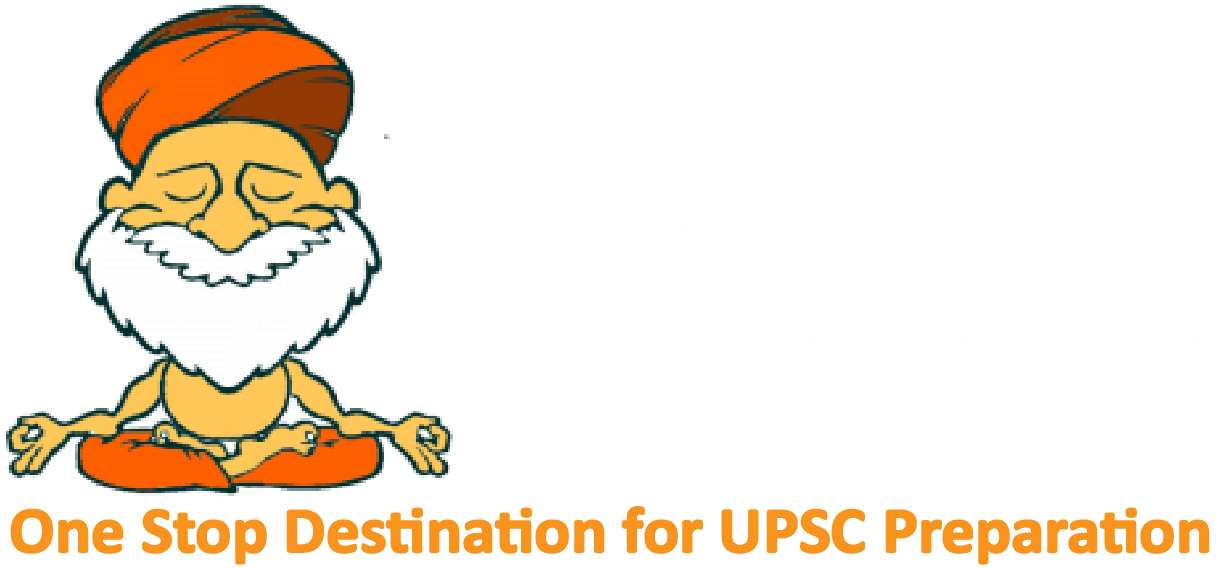- Home
- UPSC Mains
- Daily Free Initiatives
- Courses
- KPSC / KAS
- हिंदी
- Centres
- Contact Us



For Previous Daily Quiz (ARCHIVES) – CLICK HERE
The Current Affairs questions are based on sources like ‘The Hindu’, ‘Indian Express’ and ‘PIB’, which are very important sources for UPSC Prelims Exam. The questions are focused on both the concepts and facts. The topics covered here are generally different from what is being covered under ‘Daily Current Affairs/Daily News Analysis (DNA) and Daily Static Quiz’ to avoid duplication. The questions would be published from Monday to Saturday before 2 PM. One should not spend more than 10 minutes on this initiative.
Gear up and Make the Best Use of this initiative.
Do remember that, “the difference between Ordinary and EXTRA-Ordinary is PRACTICE!!”
0 of 5 questions completed
Questions:
To view Solutions, follow these instructions:
You have already completed the test before. Hence you can not start it again.
Test is loading...
You must sign in or sign up to start the test.
You have to finish following test, to start this test:
0 of 5 questions answered correctly
Your time:
Time has elapsed
You have scored 0 points out of 0 points, (0)
| Average score |
|
| Your score |
|
| Pos. | Name | Entered on | Points | Result |
|---|---|---|---|---|
| Table is loading | ||||
| No data available | ||||
Consider the following statements regarding Minority status in India.
Choose the correct statement(s) using the code given below
Solution (b)
Statement Analysis:
| Statement 1 | Statement 2 | Statement 3 |
| Incorrect | Incorrect | Correct |
| Article 29 provides that any section of the citizens residing in any part of India having a distinct language, script or culture of its own, shall have the right to conserve the same. It grants protection to both religious minorities as well as linguistic minorities. Article 30 states that- All minorities shall have the right to establish and administer educational institutions of their choice. The protection under Article 30 is confined only to minorities (religious or linguistic) and does not extend to any section of citizens (as under Article 29).
|
The Article 29 and 30 of the Constitution provide for protection of interest of minorities which includes linguistic minorities also | Notification of any community specific to a State as minority community with in a State comes under the purview of the State concerned. For instance, the Maharashtra government has notified ‘Jews’ as a minority community within the state. Moreover, the Karnataka government has notified Urdu, Telugu, Tamil, Malayalam, Marathi, Tulu, Lamani, Hindi, Konkani and Gujarati languages as minority languages within the state of Karnataka. This minority status is state dependent. States can also notify their own religious minorities. Hence both central and state governments can declare minorities. |
Context: SC recently declated that minority status in India state-dependent.
Solution (b)
Statement Analysis:
| Statement 1 | Statement 2 | Statement 3 |
| Incorrect | Incorrect | Correct |
| Article 29 provides that any section of the citizens residing in any part of India having a distinct language, script or culture of its own, shall have the right to conserve the same. It grants protection to both religious minorities as well as linguistic minorities. Article 30 states that- All minorities shall have the right to establish and administer educational institutions of their choice. The protection under Article 30 is confined only to minorities (religious or linguistic) and does not extend to any section of citizens (as under Article 29).
|
The Article 29 and 30 of the Constitution provide for protection of interest of minorities which includes linguistic minorities also | Notification of any community specific to a State as minority community with in a State comes under the purview of the State concerned. For instance, the Maharashtra government has notified ‘Jews’ as a minority community within the state. Moreover, the Karnataka government has notified Urdu, Telugu, Tamil, Malayalam, Marathi, Tulu, Lamani, Hindi, Konkani and Gujarati languages as minority languages within the state of Karnataka. This minority status is state dependent. States can also notify their own religious minorities. Hence both central and state governments can declare minorities. |
Context: SC recently declated that minority status in India state-dependent.
Consider the following statements regarding I2U2:
Select the correct statement/s:
Solution (a)
Statement Analysis:
| Statement 1 | Statement 2 |
| Correct | Incorrect |
| The I2U2 Group is a grouping of India, Israel, the United Arab Emirates, and the United States.
Iran is not a part of this grouping. It is also referred to as the ‘West Asian Quad’. |
The group’s first joint statement, released recently, states that the countries aim to cooperate on “joint investments and new initiatives in water, energy, transportation, space, health, and food security. Thus it is not a military and security alliance. |
Context: Recently PM Modi participated in virtual summit of I2U2.
Solution (a)
Statement Analysis:
| Statement 1 | Statement 2 |
| Correct | Incorrect |
| The I2U2 Group is a grouping of India, Israel, the United Arab Emirates, and the United States.
Iran is not a part of this grouping. It is also referred to as the ‘West Asian Quad’. |
The group’s first joint statement, released recently, states that the countries aim to cooperate on “joint investments and new initiatives in water, energy, transportation, space, health, and food security. Thus it is not a military and security alliance. |
Context: Recently PM Modi participated in virtual summit of I2U2.
Consider the following statements
Select the correct statement(s)
Solution(c)
Statement Analysis:
| Statement 1 | Statement 2 |
| Correct | Correct |
| ‘Sports’ being a state subject, the responsibility to promote and develop sports in the country, including tribal areas to enable tribal children to showcase their talent in traditional sports, rests primarily with the respective State/Union Territory Governments. | One of the verticals of the Khelo India Scheme, namely, “Promotion of rural and indigenous/tribal games”, is specifically dedicated to encouraging and showcasing of traditional sports of the country. |
Context – Union Minister for Youth Affairs and Sports made a statement regarding Khelo India Scheme.
Solution(c)
Statement Analysis:
| Statement 1 | Statement 2 |
| Correct | Correct |
| ‘Sports’ being a state subject, the responsibility to promote and develop sports in the country, including tribal areas to enable tribal children to showcase their talent in traditional sports, rests primarily with the respective State/Union Territory Governments. | One of the verticals of the Khelo India Scheme, namely, “Promotion of rural and indigenous/tribal games”, is specifically dedicated to encouraging and showcasing of traditional sports of the country. |
Context – Union Minister for Youth Affairs and Sports made a statement regarding Khelo India Scheme.
‘Chin’, a community seen in news recently are native to
Solution(d)
The Chin people are a Southeast Asian Zo people native to Chin State and its neighbouring states of Myanmar. The Chin are one of the founding groups (Chin, Kachin, Shan and Bamar) of the Union of Burma. It is to be noted that the Mizo people in Mizoram, India and the Chin are both Zo people, who share the same history with each other.
Context – The military coup in Myanmar has displaced half a million Myanmarese within the country and forcing more than 50,000 ethnic Chin and others to seek refuge outside.
Solution(d)
The Chin people are a Southeast Asian Zo people native to Chin State and its neighbouring states of Myanmar. The Chin are one of the founding groups (Chin, Kachin, Shan and Bamar) of the Union of Burma. It is to be noted that the Mizo people in Mizoram, India and the Chin are both Zo people, who share the same history with each other.
Context – The military coup in Myanmar has displaced half a million Myanmarese within the country and forcing more than 50,000 ethnic Chin and others to seek refuge outside.
Consider the following statements with respect to ‘Mission for Integrated Development of Horticulture (MIDH)’
Choose the correct answer using the code given below
Solution(a)
Statement Analysis:
| Statement 1 | Statement 2 | Statement 3 |
| Correct | Correct | Incorrect |
| Mission is a Centrally Sponsored Scheme being implemented through State Governments, where the subsidy is shared between the Central Government and State Governments in the ratio of 60:40 in all the states other than North Eastern and Himalayan states, where the pattern of assistance is shared in the ratio of 90:10. | Mission for Integrated Development of Horticulture (MIDH) is a Centrally Sponsored Scheme implemented from 2014-15 for holistic development of horticulture in the country, covering fruits, vegetables, root and tuber crops, mushrooms, spices, flowers, aromatic plants, coconut, cashew and cocoa. | All States/UTs are covered under MIDH. |
Context – The scheme was in news
Solution(a)
Statement Analysis:
| Statement 1 | Statement 2 | Statement 3 |
| Correct | Correct | Incorrect |
| Mission is a Centrally Sponsored Scheme being implemented through State Governments, where the subsidy is shared between the Central Government and State Governments in the ratio of 60:40 in all the states other than North Eastern and Himalayan states, where the pattern of assistance is shared in the ratio of 90:10. | Mission for Integrated Development of Horticulture (MIDH) is a Centrally Sponsored Scheme implemented from 2014-15 for holistic development of horticulture in the country, covering fruits, vegetables, root and tuber crops, mushrooms, spices, flowers, aromatic plants, coconut, cashew and cocoa. | All States/UTs are covered under MIDH. |
Context – The scheme was in news
